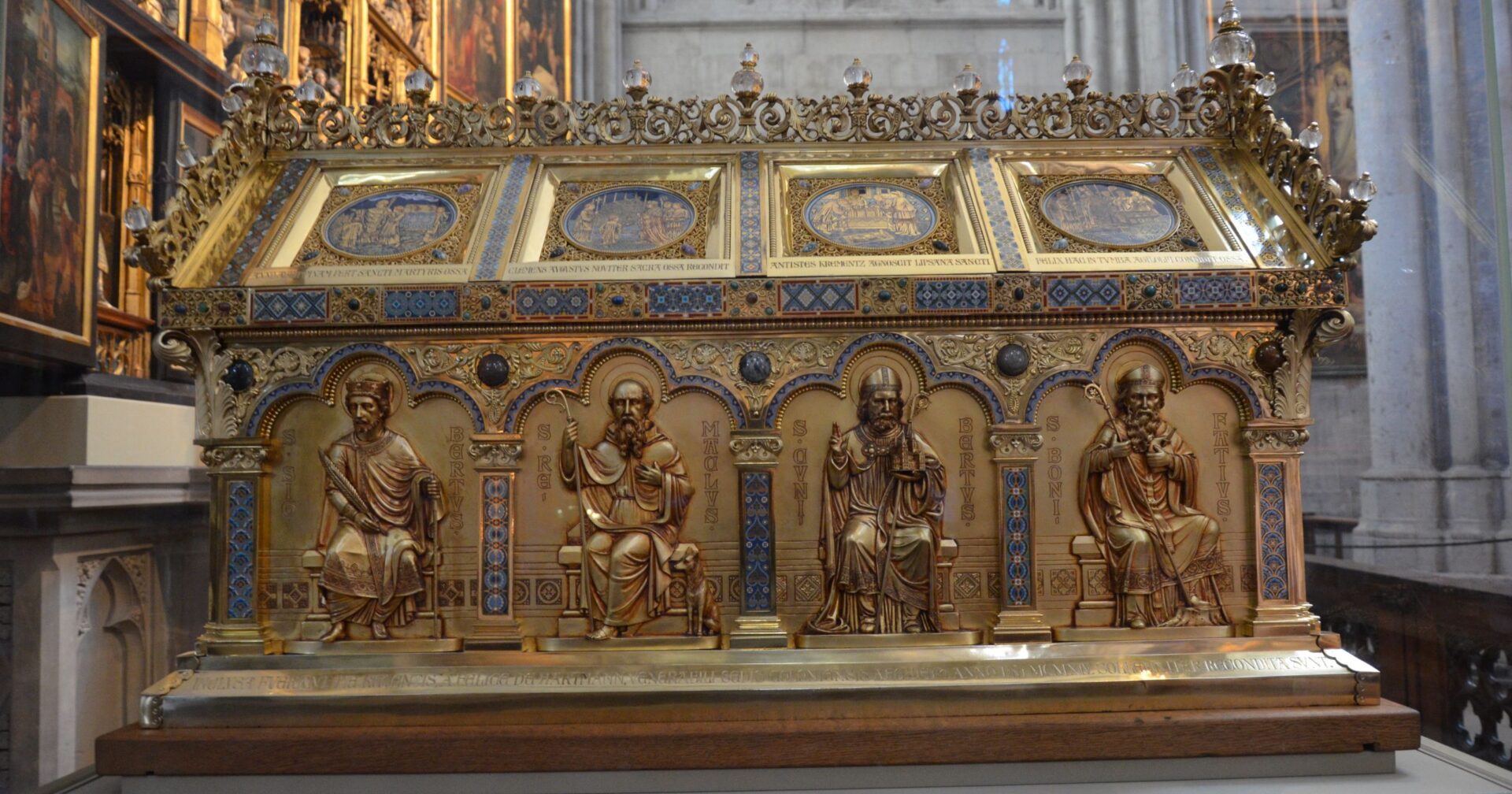The Cologne Cathedral, in western Germany, is home to an extraordinary relic: the Shrine of the Three Kings, a magnificent gilded sarcophagus believed to hold the remains of the Biblical Magi, or Three Wise Men.
This grand reliquary, a work of Mosan art, was crafted between 1180 and 1225 and stands as the Western world’s largest of its kind. Its creation involved renowned medieval goldsmith Nicholas of Verdun and features intricate gold sculptures depicting scenes from Christ’s life and figures of the apostles and prophets.
The relics’ journey began in Constantinople, moved to Milan in 314, and finally reached Cologne in 1164, gifted by the Holy Roman Emperor Frederick Barbarossa to the city’s Archbishop, Rainald of Dassel.
The significance of the relics even influenced the city’s emblem, which features three crowns symbolizing the Magi. King Otto IV is said to have presented these crowns to the Cologne church in 1199.
Later, to properly accommodate these valuable relics, the construction of the present Cologne Cathedral commenced in 1248, and its completion took over six centuries, resulting in northern Europe’s largest Gothic church.
Interestingly, the Shrine of the Three Kings was opened on 20 July 1864, revealing not only human remains but also coins from the time of Archbishop Philip I. After this inspection, the bones were returned to the shrine.
The three kings’ presence has drawn a constant influx of pilgrims to Cologne ever since!
Editorial credit: D.serra1 / Shutterstock.com
















